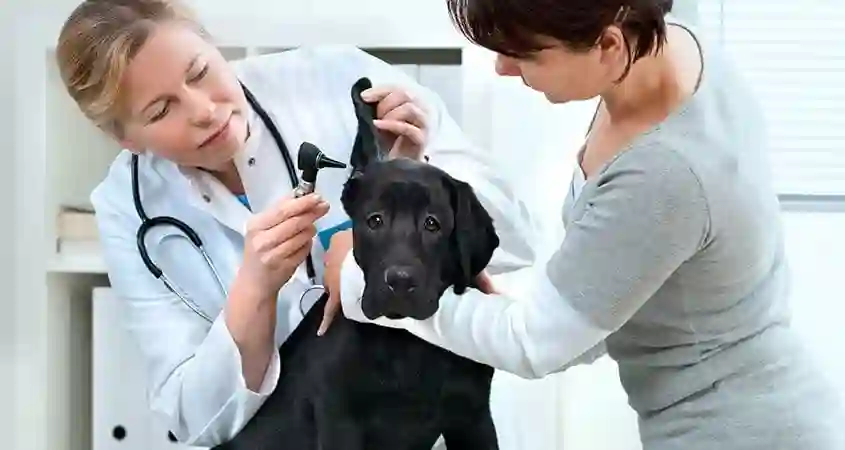
Our pets hold a special place in our hearts, becoming beloved family members in no time. Whether they have fur, feathers, or scales, these loyal companions bring joy, comfort, and unconditional love to our lives. With this bond comes a shared responsibility – ensuring the health and well-being of our furry family members. This is where pet insurance proves to be an invaluable resource. In this comprehensive guide, we will explore the world of pet insurance, its significance, how it operates, the different types of coverage available, and essential tips to assist you in selecting the right plan for your cherished pet.
Recognizing the Importance of Pet Insurance
As pet owners, we are willing to go to great lengths to provide the best care for our furry friends. Here are some compelling reasons why pet insurance has become an essential part of responsible pet ownership:
1. Rising Veterinary Costs
In recent years, veterinary medicine has made significant strides, offering advanced treatments and procedures that can greatly enhance the health and longevity of our pets. However, these advancements often come with a hefty price tag. Routine check-ups, vaccinations, surgeries, and emergency care can quickly accumulate significant costs. Pet insurance acts as a financial safety net, ensuring that you can provide the best care for your pet without worrying about the financial burden.
2. Unexpected Accidents and Illnesses
Just like humans, pets can experience unexpected accidents and illnesses. Whether it’s a broken bone from a fall or a sudden diagnosis of a chronic condition, these situations can be emotionally distressing and financially challenging. Pet insurance provides peace of mind, allowing you to make healthcare decisions for your pet based on their needs rather than your budget.
3. Peace of Mind
Knowing that you have a reliable source of financial support for your pet’s healthcare can offer tremendous peace of mind. You won’t have to make difficult choices between your pet’s health and your financial stability. Pet insurance empowers you to focus on providing the best possible care for your furry companion without the added stress of financial worries.
How Pet Insurance Works
Pet insurance operates similarly to health insurance for humans, albeit with some unique features. Here’s a breakdown of how it typically functions:
1. Premiums
To secure pet insurance coverage, you pay a regular premium, usually on a monthly or annual basis. The premium amount can vary based on factors such as your pet’s age, breed, location, and the level of coverage you choose. While it may appear as an added expense, it provides peace of mind and financial security.
2. Coverage Options
Pet insurance plans come in various forms, offering different types of coverage:
- Accident-Only Coverage: This type of plan typically covers injuries resulting from accidents, such as broken bones or injuries sustained in car accidents.
- Illness Coverage: These plans cover various illnesses, ranging from minor infections to serious conditions like cancer or diabetes.
- Comprehensive Plans: Comprehensive plans combine accident and illness coverage, providing more extensive protection for your pet’s health.
- Optional Coverage: Some policies offer additional coverage for preventive care, including vaccinations, dental cleanings, and routine check-ups.
When choosing a plan, consider your pet’s specific needs and your budget to determine the most suitable coverage.
3. Deductibles and Reimbursement
Pet insurance policies typically include deductibles and reimbursement rates. The deductible is the amount you must pay out of pocket before the insurance company starts reimbursing you for eligible expenses. Higher deductibles can result in lower monthly premiums but require you to cover more of the initial costs. Reimbursement rates vary among plans, with some policies covering a percentage of the total cost (e.g., 80%), while others offer a fixed reimbursement amount.
4. Claim Process
When your pet requires medical care, you need to submit a claim to your insurance provider. This usually involves providing your pet’s medical records, invoices, and a claim form. Once your claim is approved, you’ll receive reimbursement in the form of a check or direct deposit, depending on your policy terms. The time it takes to process a claim can vary, so it’s important to familiarize yourself with your insurer’s specific claims process.
5. Waiting Periods
Most pet insurance policies have waiting periods before coverage takes effect. During these waiting periods, you cannot make claims for specific conditions or services. Waiting periods are designed to prevent fraud and ensure that pet owners don’t purchase insurance only when their pets are already sick.
Selecting the Right Pet Insurance Plan
Choosing the right pet insurance plan is a significant decision that requires careful consideration. Here are some key factors to keep in mind when selecting a plan:
1. Budget
Start by evaluating your budget and determining how much you can comfortably allocate to pet insurance premiums and potential deductibles. While opting for a lower premium may be tempting, it could result in higher deductibles or limited coverage. Finding the right balance between your budget and your pet’s needs is essential.
2. Coverage
Consider your pet’s age, breed, and any pre-existing conditions when selecting coverage. Some policies may exclude certain conditions or have breed-specific limitations. Ensure that the plan you choose adequately covers your pet’s potential healthcare needs.
3. Deductibles and Reimbursement
Understand the deductible amount and reimbursement rate of the plan. A higher deductible may lower your premium but require you to pay more out of pocket before receiving reimbursement. A higher reimbursement rate means the insurance company covers a larger portion of the costs.
4. Network and Providers
Check if the insurance company has a network of preferred veterinarians or if you can choose any licensed veterinarian. Additionally, ensure that your current vet accepts the insurance you’re considering.
5. Waiting Periods
Review the waiting periods for different conditions and services. Make sure you understand when coverage begins for various aspects of your pet’s healthcare.
6. Exclusions
Carefully read the policy’s fine print to identify any exclusions. Some policies may exclude certain hereditary conditions, behavioral issues, or pre-existing conditions. Understanding these exclusions is crucial to avoid surprises when making a claim.
7. Customer Reviews and Reputation
Research the insurance company’s reputation and read customer reviews. This can provide insights into the company’s customer service, claims process, and overall satisfaction levels among policyholders.
Maximizing the Benefits of Pet Insurance
Once you’ve chosen the right pet insurance plan, there are several ways to make the most of it:
1. Regular Check-ups
Don’t skip routine check-ups and preventive care. Many pet insurance plans cover these services, and they can help detect and address health issues early, potentially saving you money on more extensive treatments down the road.
2. Maintain Records
Keep organized records of your pet’s medical history and invoices. This will streamline the claims process and ensure that you have all the necessary documentation when filing a claim.
3. Review Your Policy
Regularly review your pet insurance policy to ensure it still meets your pet’s needs. As your pet ages or if their health status changes, you may need to adjust your coverage.
4. Compare Providers
Periodically compare pet insurance providers to see if there are better plans available that offer more comprehensive coverage or lower premiums. Switching insurers can be an option if it provides better value for your money.
5. Be Proactive
If you suspect your pet may have a health issue, don’t delay seeking veterinary care. Prompt attention to your pet’s health can improve their chances of a full recovery and maximize your insurance coverage.
Conclusion
Pet insurance is not just an additional expense; it’s a vital investment in your pet’s health and well-being. It offers financial security and peace of mind, ensuring that you can provide the best possible care for your cherished companion without the burden of overwhelming healthcare costs. By carefully selecting a plan that aligns with your pet’s needs and budget, staying proactive in managing their health, and maintaining accurate records, you can ensure that your furry family member receives the best care throughout their life. Pet insurance empowers you to make decisions based on love and care rather than financial constraints, allowing you to cherish countless happy moments with your beloved pet. So, protect your paws and choose the right pet insurance to safeguard your furry family member’s health and happiness.
Related posts:

Categories
- Apps (1)
- Automotive (23)
- Beauty (7)
- Business (118)
- Celebrities (2)
- Digital Marketing (21)
- Ecommerce (1)
- Education (18)
- Entertainment (25)
- Events (6)
- Features (4)
- Fitness (10)
- Food (2)
- Forex & Crypto (21)
- General (105)
- Health (48)
- House (61)
- Lifestyle (48)
- Marketing (8)
- Parenting (3)
- Pets (10)
- Real Estate (7)
- Safety and Security (11)
- Social Media (20)
- Sports (104)
- Technology (67)
- Travel (22)



















